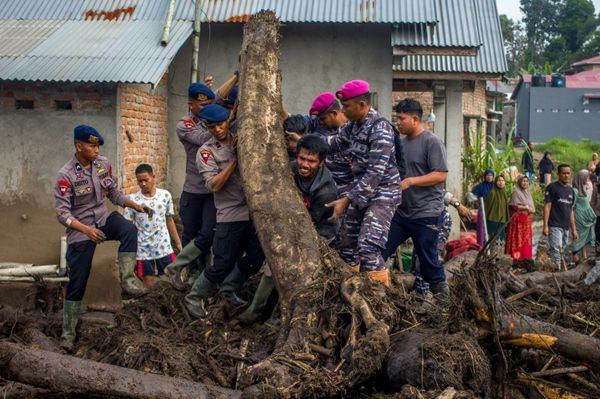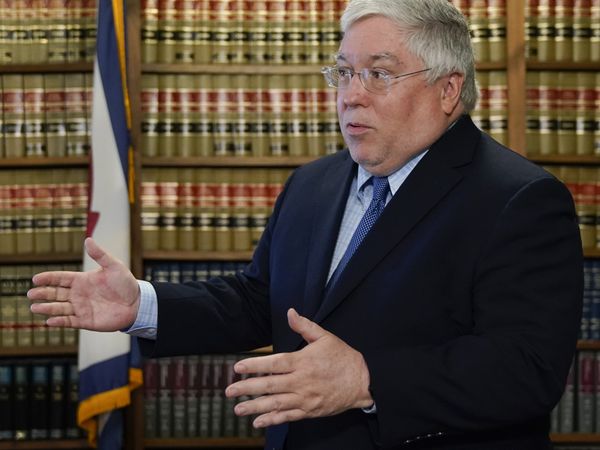
It’s been a careening ride for Australia’s news media over the weekend’s Bondi Junction killings, as coverage has ping-ponged between getting it right and getting it very wrong.
This time, it’s disturbingly close to home: Sydney’s east is where many journalists live, and the Westfield Shopping Mall, now a crime scene, is something of a community centre. In the past 48 hours, many of us have had that sickening, sliding-doors sensation of knowing that in a not-very-different universe, we could have been there.
And yet, this did occur in this universe for some, such as Guardian Australia’s Nikki Marshall, whose powerfully restrained writing evokes the lurch from her being a shocked shopper to a business-like reporter.
There are high stakes in getting it right: how the news media handles the story impacts whether Bondi becomes a tragic one-off or inflames a disturbing new pattern of behaviour.
In the US, where researchers sadly have a large data pool to draw on, studies suggest an over-enthusiastic media risks encouraging copycats: “The more media attention a shooter gets, the more likely the event will inspire a future mass shooter,” says the Washington DC National Center for Health Research.
Australia has been largely immune from the explosion of mass killings (usually defined as four victims or more) in much of the world over the past quarter-century, with credit given to John Howard’s gun laws.
That’s good, of course. But it means too many of Australia’s journalists have not had to learn the lessons faced by our overseas colleagues about how to handle tragedies like the weekend’s killings. That knowledge gap is showing up right now.
Lesson 1: Don’t trust Twitter randoms — ever
Let’s start with the obvious: don’t trust social media. How the news media handled the many rumours that turbocharged social media networks in Sydney’s east should serve as a welcome caution.
It seems it wasn’t obvious enough for Channel 7, however, which just couldn’t resist the too-good-to-be-not-true fakery of the killer’s identity. In the current climate — rife with antisemitism and Islamaphobia — and with bad faith actors on social media already speculating about the motives of the killer, the network published the incorrect and unverified details of an individual with a common Jewish surname, who it stated was the identity of the attacker.
It’s a repeat offence for the network. Two years ago, it settled defamation proceedings for a near-identical case of misidentifying a man regarding a notorious child kidnapping case. This weekend’s stumble also comes fresh off the network’s multiple embarrassments in the Bruce Lehrmann trial. Time for a clean sweep at Seven, starting at the top.
Lesson 2: Cancel the killer
Copycats need something to copy. And too often, it’s the media that provides the template, with all-too-graphic descriptions and detailed histories of mass killers. Instead, the American Journal of Public Health advises that “only the details necessary to describe the event should be provided. The less the behaviour is described, the less likely it is to be imitated”.
Here’s a how-to: Sunday night’s ABC television coverage deliberately played down the killer and his actions in its reporting, and closed the bulletin by mourning the victims while declining to repeat the killer’s name.
It reflected the commitment of New Zealand Prime Minister Jacinda Ardern regarding the Australian Christchurch killer: “Speak the names of those who were lost rather than the name of the man who took them. He is a terrorist. He is a criminal. He is an extremist. But he will, when I speak, be nameless.”
Lesson 3: Centre the victims — and how they choose to be centred
The victims should be known and mourned. The witnesses, too, should have a voice. Much of the early reporting from the scene on Saturday night — particularly by the young reporters rostered on for the weekend shifts — was sensitive and news-breaking.
But just as quickly, news media got it very wrong as outlets started ransacking the victims’ Facebook and other social profiles for images and videos to feed the media’s hunger for content.
Just stop, local member Allegra Spender pleaded on Sunday morning: “Please respect the privacy of those affected by the tragedy at Bondi Junction. I have been contacted by Ash’s family. They have asked the media not to publish her personal images from social media. I ask the media and everyone to respect their wishes.”
Lesson 4: Pick the (actual) trend to report
Here’s a couple of truths every journalist (and Channel 7) should have had in their heads from the moment the story broke: killers are most likely to be white men. Women are all too often the targets of violence by men. Call it, per the apparent NSW Police style guide, a likely “ideation”.
Yet from about 17,000 kilometres away, a presenter on News Corp’s London-based, multimillion-dollar, loss-making channel TalkTV claimed the Bondi event was a “terror attack by another Islamist terrorist”. (A day later she admitted she was wrong.)
Her mistake was going public. But two decades of repeated post-9/11 correlation between terrorism and mass killing have done their work. The relief across much of the community when the NSW Police confirmed the attack was not terrorism — not some local reflection of the war in Gaza — was palpable.
However, in their eagerness to move on, too many reporters were happy to lean into the “mental illness” trope as a catch-all phrase that magically explained it all away.
As we move past this weekend’s killings, we’ll benefit from more reporting of the hard truths about violence against women rather than increasingly high-tech graphic reproductions of what happened at Bondi. And we’ll do a better job if we think more about how we report on mental health with the nuance of what it means, without stigmatising those suffering from illness.
Lesson 5: Share the grief — to a point
Journalists have a comforting concept of themselves as the facilitators of public grief at moments of high tragedy. Readers, watchers and listeners aren’t so sure. The media’s journalistic empathy quickly becomes the community’s reportorial intrusion. Over-egged media reporting can make things worse, turning a shared grief into a deeper community trauma — among journalists, too.
Will Australia’s news media take the lessons it needs from Bondi? Or, as too often with big crimes, will the continued clickbait lure of the dramatic moment overwhelm the necessary journalistic caution the next time around?







